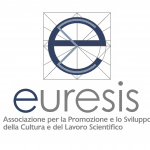From one to infinity. At the heart of mathematics
By the Euresis association.
The guiding idea driving this exhibition is to create the opportunity for an encounter with mathematics, also for those who have abandoned it as “not for me”.
The encounter begins with amazement in the face of simple but unsolved problems which highlight how a clarifying resolving idea can naturally astonish us as a thing of beauty. This is the inspiration for beginning that exploration of intertwined truth and beauty which pervades all of mathematics. There are many questions which can naturally arise and for which the exhibition tries to give initial answers: what drives mathematics throughout the course of history? What are its adopted methods in the search for the truth? What relationship does it have with the experimental sciences? Why does infinity continuously recur in mathematical discourse and what is its role? What is a proof? Is there something left to be discovered today in mathematics? Is abstraction the enemy of the relationship with reality or can it be a powerful instrument for the under standing of reality?
To those entering the exhibition is presented a kernel of the mathematical experience, a little seed of marvel and identification of its structure composed of “admirable theorems, rigorous proofs, formidable applications” through which becomes evident a beauty well addressed by the words of the mathematician and philosopher Pavel Florenskij: “Beauty is not something which can be immediately penetrated. Or rather, it can even be penetrated quickly, but after having rested alongside it for some time, and after the organic composition of those elements which have been assimilated in the soul. (Non dimenticatemi, Mondadori, Mi, 2000, pp. 91-92).
The entry to the exhibition proposes a problem which embodies those characteristic elements of mathematics which intuitively hints at its own nature and provides the instruments for its resolution.
The aim is to stimulate curiosity and astonishment, but primarily to inspire within the visitor questions which will spurn him to further pursue the remainder of the path.
It proceeds with a historic gallery, in which the visitor finds himself in good company, together with a long series of mathematicians at work, a tradition going back over two thousand years, a living tradition in continuous evolution, made of men who have accepted their commitment with questions very similar to ours.
Hence following the time line, observing a story populated with faces – a story frequently characterised by the relationship between master and pupil – we enter the mathematics courtyard, the central point of the exhibition, in which the encounter becomes relationship and initial knowledge.










